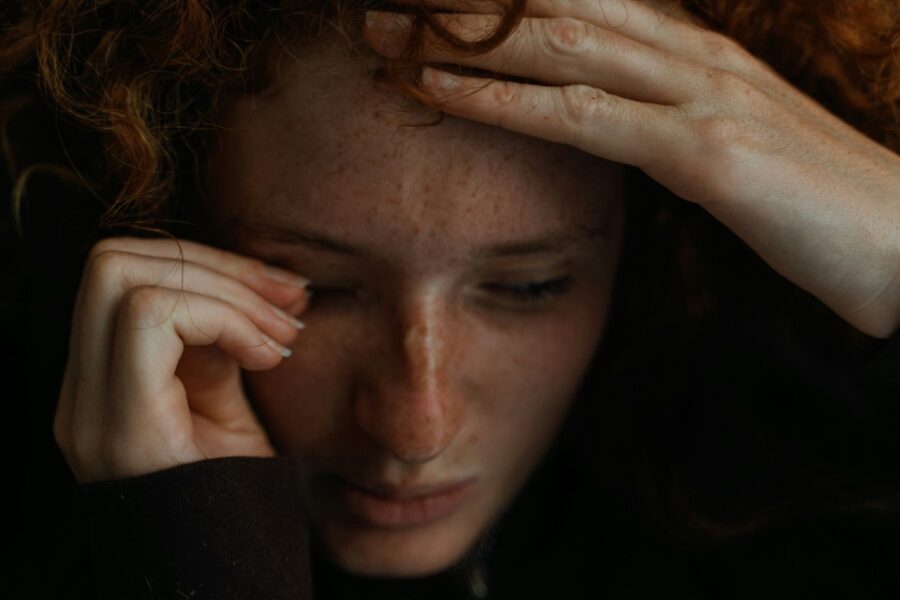Many people find themselves trapped in a toxic relationship cycle, not by choice, but because it’s an ingrained pattern from their past. This harsh reality becomes their “normal” for love, marred by abandonment, rejection, shame, and other painful emotions. Let’s set one thing straight—you deserve better. The notion that love must come with pain is a flawed script that needs rewriting.
The cycle often begins with tension, escalates to conflict, peaks at a crisis, and then dips into a deceptive calm with apologies or promises of change—only to start over again. It’s a tumultuous ride where the “make-up” part can be so intoxicating that it’s hard to see the underlying abuse.
You might think you can change them and heal their toxic behavior. The truth may be tough to accept, but the cycle isn’t yours to fix. It’s a script they’ve written, and they will keep playing it out until there is a fundamental change, often requiring professional help.
Over time, you’ve been conditioned to normalize what should never have been acceptable, to silence your discomfort because confrontation only resets the cycle. But hear this: You are more than good enough to demand a love that respects, cherishes, and uplifts you—a love free of turmoil and degradation.
Let’s break down this cycle, piece by piece, so you can recognize it, understand it, and step out of it. You’re not condemned to repeat what you’ve known; you have the power to create a new pattern, one that aligns with your worth and your right to a healthy, loving relationship.

Source: https://en.wikipedia.org/wiki/Cycle_of_abuse
Signs You Are In a Toxic Relationship Cycle
Six signs you may be stuck in that toxic cycle loop include:
1. Diminished Self-Esteem: A significant sign of a toxic relationship is a noticeable decline in self-esteem. If you feel worthless, doubt your abilities, or believe you don’t deserve better treatment, it’s often due to the negative, critical, or dismissive behavior of your partner.
2. Walking on eggshells In a healthy relationship, you should feel safe and secure, both physically and emotionally. If you are constantly on edge, anxious about your partner’s reactions, or worried about provoking anger, it’s a sign that the relationship is not a safe space for you.
3. Consistently disrespected: Whether through words, actions, or disregard for your boundaries and feelings, consistent disrespect is a clear indicator of an unhealthy relationship. This can include public humiliation, private belittlement, or simply ignoring your wishes and needs.
4. Unfulfilled needs: While no relationship can meet every need, consistently unmet emotional, physical, or psychological needs—like a lack of emotional support, intimacy, or mutual respect—are signs of toxicity.
5. Often Taking the Blame: In toxic relationships, one partner may always be blamed, regardless of the situation. This can distort your sense of self and make you feel responsible for things beyond your control, preventing you from asserting your needs or rights.
6. Isolated from Friends and Family: Isolation is a powerful tool in toxic relationships. It can start subtly but eventually lead to being cut off from your support network, making it harder for you to seek help or exit the relationship.
Keeping Up the Charade
Caught in the cycle of abuse, it’s common to fall into what Dr Robin Stern calls the Explanation Trap—a state where you constantly justify or rationalize your partner’s abusive behavior to maintain the façade of a happy relationship. It’s not only about making excuses for them; it’s also about protecting yourself from acknowledging the amount of toxicity you are enduring and trying to make sense of the senseless.
This trap is deceptive. It keeps you tangled in the cycle because with every excuse, you’re inadvertently reinforcing the behavior. You’re not giving them a pass out of ignorance; it’s often out of a deep-seated hope that by understanding them, you can change the dynamic. But the truth is, understanding doesn’t always lead to change, especially if the other person isn’t willing.
Then there’s the keeping up the charade—maintaining the outward appearance that everything is fine and your relationship is perfect. Jaime Mahler explains that it is a façade that protects not just the abuser but the fragile hope that things will somehow get better if you can just keep it all together. All the while, the mask you wear is heavy, hiding the most important person from view: you.
Recognizing This Trap
Understanding whether you are complicit in perpetuating the toxic relationship cycle going, is pivotal to stepping out of it. Here are a few indictors that maybe you have a role to play here too:
– Justifying Behavior: You find excuses for your partner’s abusive behavior, such as stress at work or a tough childhood, even when these behaviors are recurrent and harmful.
– Downplaying Concerns: When friends or family express worry, you reassure them that things aren’t as bad as they seem, minimizing the severity of your partner’s actions.
– Blaming Yourself: You believe that if you were better—more understanding, more loving—your partner wouldn’t act this way.
– Avoiding the Truth: You skirt around the reality of the situation, ignoring the gut feeling that tells you something is wrong.
– Waiting for Change: You hold onto the hope that your partner will change, despite a lack of action on their part to do so.
– Over-Compensating: You go out of your way to present a happy facade, over-praising your partner in public or on social media to convince others (and perhaps yourself) that the relationship is healthy.
– Repeated Forgiveness: You forgive your partner time and time again without holding them accountable or seeing any real change in their behavior.
If these resonate with you, it may be an indication that you’re stuck in the Explanation Trap. Acknowledging this is a critical move toward the change you deserve.
The 7 Pillars of a Toxic Relationship
Outlined in Mahler’s work, these pillars are the load-bearing walls of a harmful partnership, and understanding them is vital. By unpacking these seven critical aspects, you’ll gain the insights needed to start dismantling the bricks of a toxic relationship, one by one.
1. Trauma: Past hurtful experiences can leave deep wounds that affect how individuals interact in relationships, leading to fear-based reactions and harmful cycles.
2. Tolerating Harmful Behavior: In toxic relationships, there is often a threshold for unacceptable behavior that gets pushed further and further, allowing the cycle of abuse to continue.
3. Confusion: A common tactic in toxic dynamics is to keep the victim off-balance. Whether through gaslighting or mixed messages, the aim is to create doubt and hesitancy.
4. All-or-Nothing Mentality: This black-and-white thinking traps individuals in extremes—either everything is perfect, or everything is a disaster, with no room for normal relationship ebbs and flows.
5. Manipulation: Twisting situations, conversations, and behaviors for control or personal gain, often at the expense of the other person’s well-being.
6. Deception: Lies and half-truths are the currency of a toxic relationship, making it difficult for the victim to trust their judgment or the abuser.
7. Inauthenticity: A lack of genuine interaction where actions and words are often performed with an ulterior motive, rather than from a place of authenticity and love.
Moving Forward
Firming up these pillars is like finding a map in a maze: it won’t take you out, but it will point you in the right direction to begin your journey to breaking these toxic relationship cycles.
The journey of healing begins with seeing things as they truly are, not just as we hope they could be. Sometimes, the most caring thing we can do for ourselves is to stop grading on potential and start assessing the reality before us. It’s about recognizing actions over intentions, and patterns over promises.
Arm yourselves with knowledge and peel back the curtain on toxic relationships. Embrace the power of saying, “that’s not normal”; this is a testament to your growing awareness. It’s a statement that draws a line in the sand between acceptable and harmful behavior.
Take control of your life and start your journey to healing today. Buy my book, “Healing from Emotional Abuse” for in-depth insights and practical steps to overcome emotional abuse.




